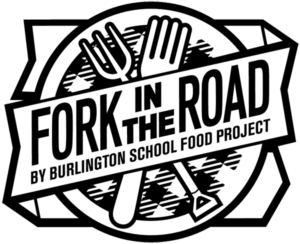 Farm-to-School programs are great for helping children and youths learn more about healthy eating. However sometimes after everything is going smoothly, there is a point where funding levels or community interest decreases. There a few solutions that a Farm-to-School program in Burlington, Vermont have implemented to overcome these barriers and expand their program. They have shared their solutions in a USDA webinar as a way to help others create their own sustainable programs.
Farm-to-School programs are great for helping children and youths learn more about healthy eating. However sometimes after everything is going smoothly, there is a point where funding levels or community interest decreases. There a few solutions that a Farm-to-School program in Burlington, Vermont have implemented to overcome these barriers and expand their program. They have shared their solutions in a USDA webinar as a way to help others create their own sustainable programs.
To begin, the garden is deeply rooted in the school. Students from all classes get the opportunity to go out to the garden. Students sketch the fruits and vegetables as a part of art class, they identify them food items in Spanish as a part of Spanish class, and they also use the garden in math, science, and physical education classes. Having the garden so involved in all of the classes creates an atmosphere that encourages responsibility from all of the students, not just a select few.
One of the biggest solutions for creating a sustainable program is to get an overwhelming amount of community support, as well as student and teacher participation. The Burlington program really worked to make their presence known throughout the community. They worked to create partnerships with many local companies that had the same mission: local hardware stores, mom and pop stores, greenhouses, the Gardener’s Supply Company, and health food stores. In addition to creating these partnerships with companies that helped to provide supplies, they took pictures of everything. The partnerships were able to display photo evidence of the impact of the gardens, which enhanced their business as a result, thus developing a cycle of events that continues to fuel their gardens and the community.
Another way to create a sustainable program is to keep it exciting and in the community’s face. The B urlington
urlington
program started a youth run food truck (Fork in the Road) which pays students minimum wage while teaching them valuable information. The students meet with farmers, learn culinary skills, develop an awareness for the community which is very impactful. It was an innovative way to create leaders, boost education and get more community buy in.
Overall, as health professionals, if we have a farm-to-school program we need to think about expanding to the next level and becoming more than gardens or kids eating new fruits and vegetables. Food can be an umbrella for education. The students are benefiting by gaining responsibilities and becoming self-advocates. They are learning more about food systems and truly becoming consumers in their community. This gives us the opportunity to really elevate the community and impact more than just the students in the schools.